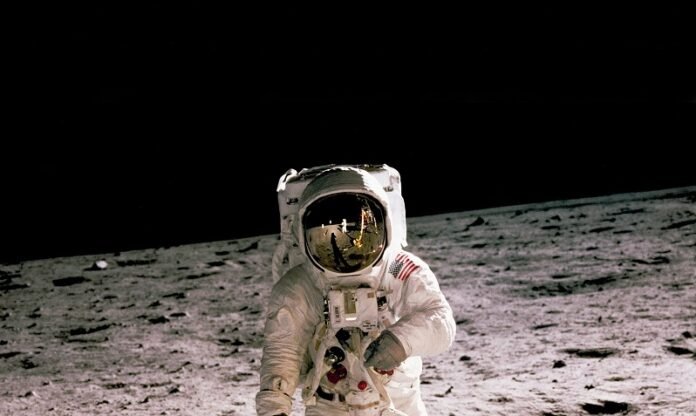Een halve eeuw na de iconische Apollo-missies waarbij twaalf mannen over de zee konden lopen Moon tussen 1968 en 1972, NASA is van plan om ambitieus aan de slag te gaan Artemis Maan Mission designed not only to create long term menselijk presence on and around the Moon but also to learn lessons in preparation for menselijk missions and habitations on maart. Diep ruimte menselijk habitation, enabling mensen to become a multi vliegtuig species to thwart the risk of extinction is still a very far dream however a beginning is to happen in near future.
“Since, in the long run, every planetair civilization will be endangered by impacts from ruimte, every surviving civilization is obliged to become spacefaring—not because of exploratory or romantic zeal, but for the most practical reason imaginable: staying alive.” – Carl Sagan, 1994.
Artemis I, een onbemande vliegtest, de eerste in een reeks Artemis's steeds complexere missies naar de Moon, zal naar verwachting op 29 augustus 2022 van start gaan. Dit zal de weg vrijmaken voor toekomstige bemande vluchten (Artemis II, Artemis III en verder) naar de maan- oppervlak. In 2024 zal Artemis de eerste vrouw en de eerste gekleurde persoon op de wereld landen Moon.
Wat stelt Artemis Daarnaast is het doel om een basiskamp op het maanoppervlak te bouwen om astronauten een plek te geven om te wonen en te werken maan. Artemis Base Camp includes a modern cabin, a rover, and a mobile home. It is true that mensen have been living and working on International Tussenruimte Station (ISS) for several years however Artemis Mission will allow astronauts to live on the surface of another celestial body, hence one can argue that Artemis would be first concrete step towards colonisation of deep ruimte. Dit aspect maakt Artemis bijzonder.
De Artemis Moon Missie, NASA's collaborative programme with European Tussenruimte Agency (ESA) and Canadian Tussenruimte Agency (CSA) has three objectives –scientific discovery, economic benefits, and inspiration for new generation. There are six components of the mission
- Orion spacecraft: The exploration vehicle that will carry crew to ruimte, provide emergency abort, sustain the crew during the travel and provide safe re-entry to the Earth.
- Tussenruimte Launch System (SLS) Rocket: The heavy-lift rocket that will launch Orion spacecraft.
- Exploration Ground Systems (EGS): ondersteunt de lancering en het herstel van terugkerende astronauten.
- The Gateway: the spaceship in lunar baan that will serve as multi-purpose outpost baan de Moon where astronauts will transfer between Orion and the lander. This will provide essential support for long-term menselijk return to the lunar surface
- menselijk Landing System: Lander will take astronauts from the Gateway in the lunar baan naar de oppervlakte van de Moon and back to the Gateway in the baan.
- Artemis Base Camp: zal dienen als huis en werkplek voor een bemanning van vier astronauten aan de oppervlakte van de aarde Moon voor ongeveer 30-60 dagen. Hierdoor kan de bemanning op het schip blijven Moon voor maximaal twee maanden achter elkaar.
menselijk habitation system is the key piece of the mission for living longer in deep ruimte both for extending duration of operation as well as for optimal physical and mental wellbeing of the astronaut. This is certainly an imperative for future mission to maart. De Transit Habitat is bedoeld voor missies van lange duur.
volgehouden menselijk habitation on the surface of the Moon is a very ambitious goal because of unique challenges posed by the lunar environment and the remoteness from the Earth. Notwithstanding this, experiences gained in successful operation of International Tussenruimte Station (ISS) for over two decades should contribute in Artemis Moon Missie.
The Artemis Base Camp, as humanity’s first long-term home on land outside Earth will enable menselijk missies naar maart. With this, the idea of making mensen multi-vliegtuig species begins.
***
Bronnen:
- Nasa. Artemis. Verkrijgbaar bij https://www.nasa.gov/specials/artemis/
- Nasa. Artemis-programma. Verkrijgbaar bij https://www.nasa.gov/artemisprogram
- G. Flores, D. Harris, R. McCauley, S. Canerday, L. Ingram and N. Herrmann, “Deep Tussenruimte Habitation: Establishing a Sustainable menselijk Presence on the Moon and Beyond,” 2021 IEEE Aerospace Conference (50100), 2021, pp. 1-7, doi: https://doi.org/10.1109/AERO50100.2021.9438260
- NASA. Artemis Deep Space Habitation: Enabling a Sustained menselijk Presence on the Moon and Beyond. Available at https://ntrs.nasa.gov/api/citations/20220000245/downloads/Artemis%20Deep%20Space%20Habitation%20Enabling%20a%20Sustained%20Human%20Presence%20on%20the%20Moon%20and%20Beyond%20(3).pdf
***






































